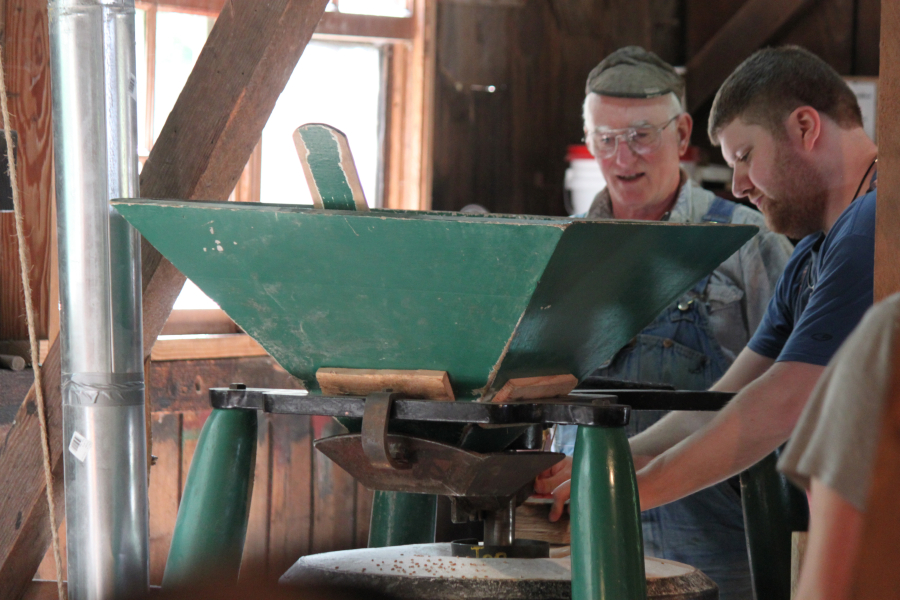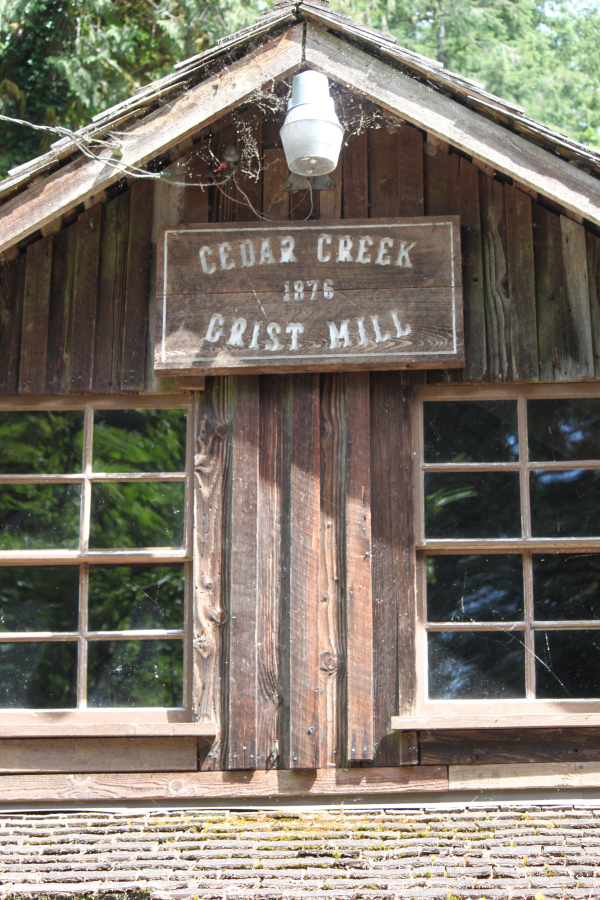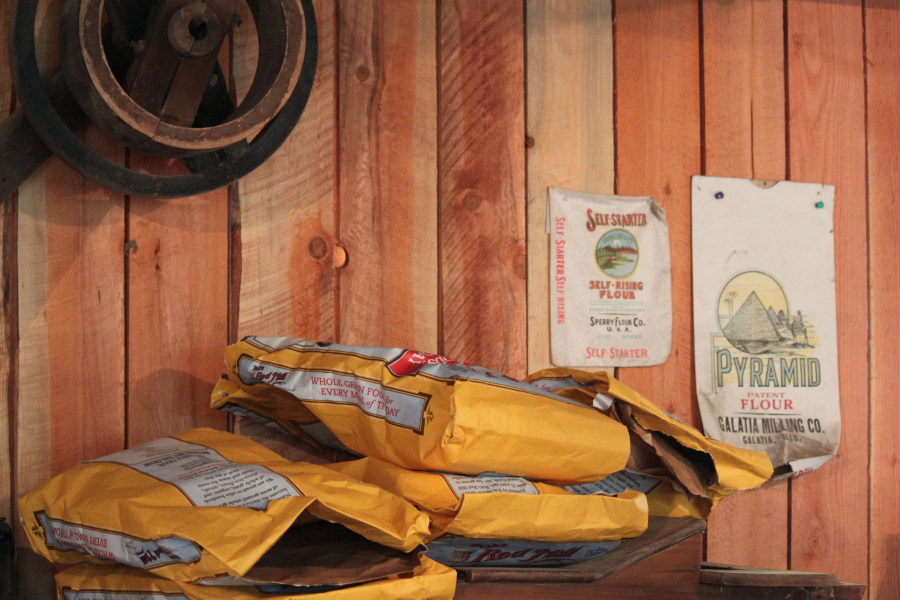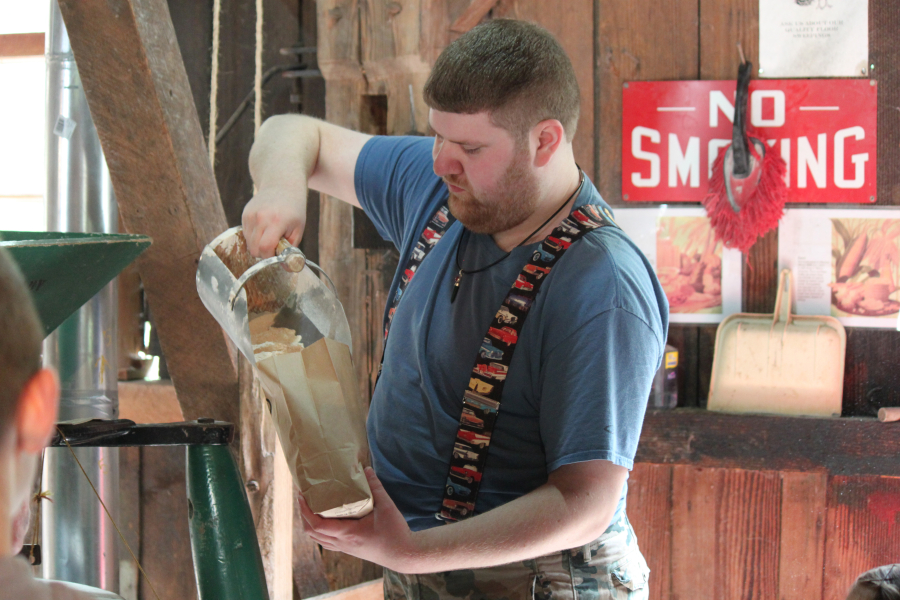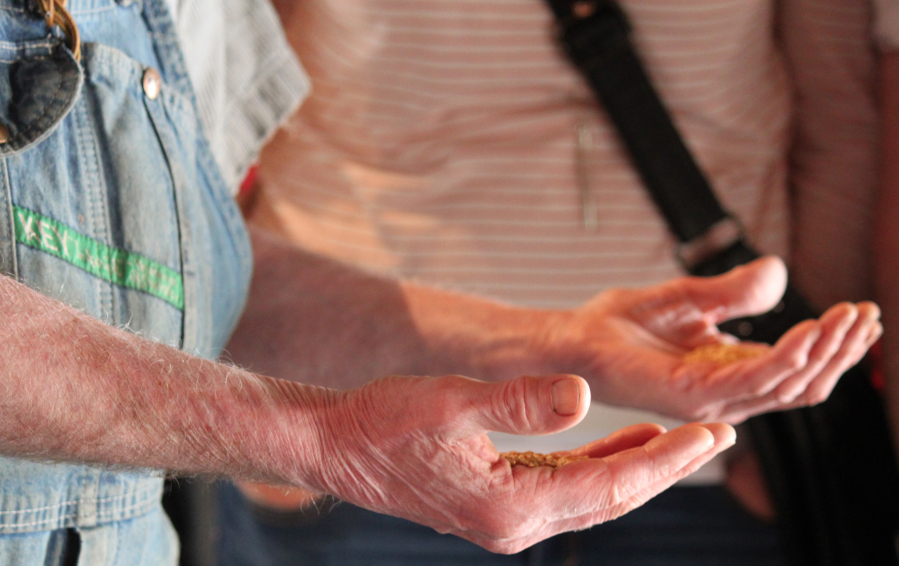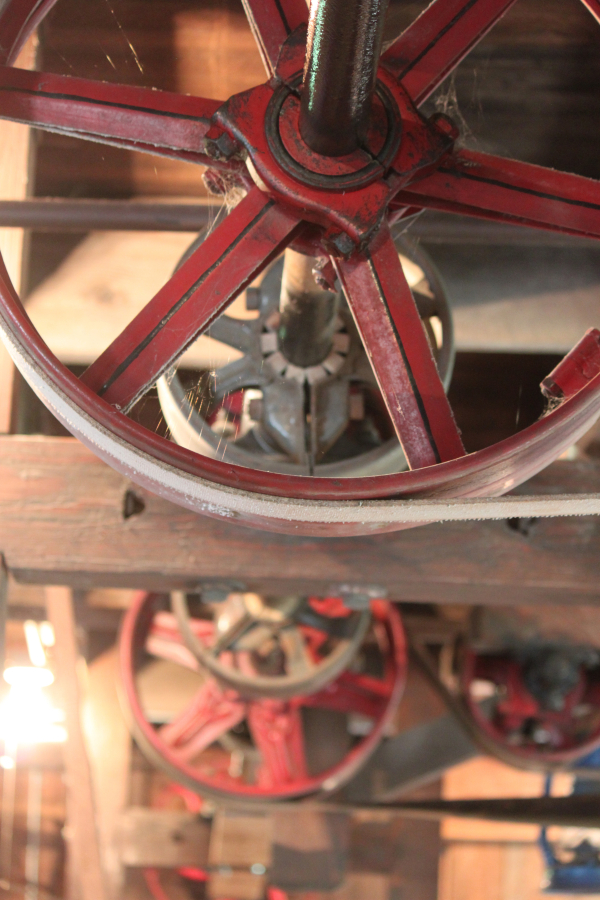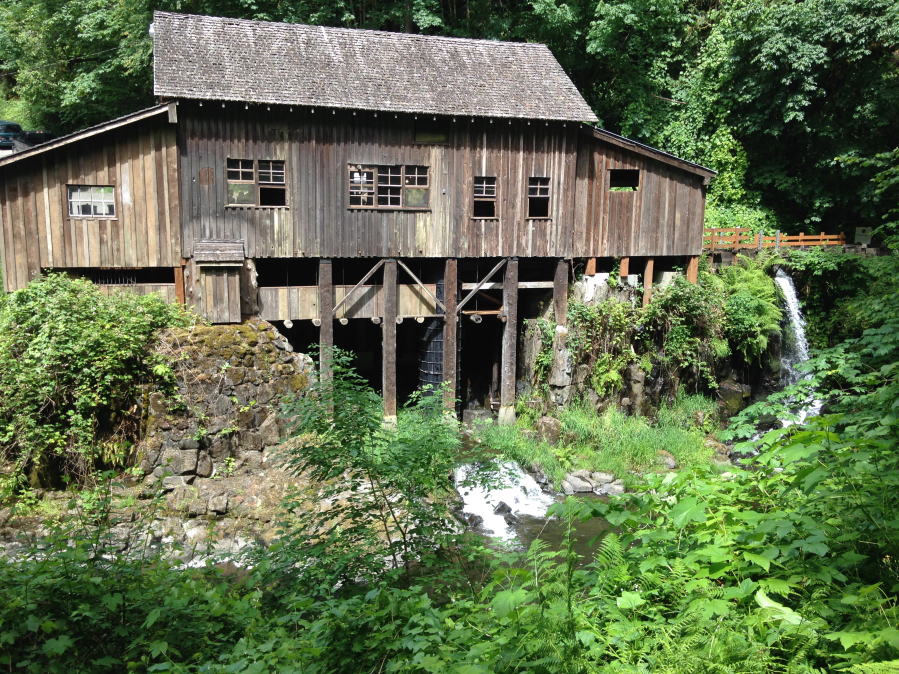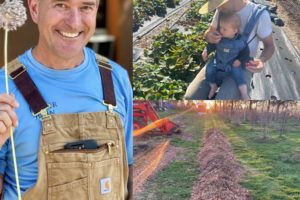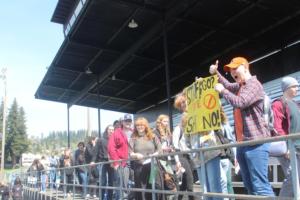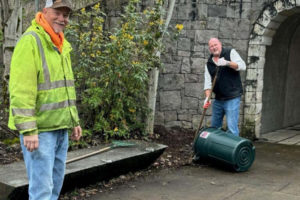The covered bridge, a 1994 replacement for a truss bridge built in 1935, is a whimsical gateway to the Cedar Creek Grist Mill, which was originally built in 1876 by George Woodham and his two sons, along with A.C. Reid.
Today, 140 years later, it is the only remaining grain grinding mill in Washington that has maintained its original structural integrity. The story of how that came to be features a dedicated group of volunteers who wanted to preserve an incredible piece of local history.
It was the mid-1870s when Woodham, a migrant miller, settled in the north Clark County area. The grist mill was originally built with a water wheel to power the milling machinery, taking advantage of Cedar Creek’s year-round water flow. It was named Red Bird Mill.
In 1886 that water wheel was replaced by a 16 horse power turbine made by The James Leffel & Co., a company that opened in 1862 and is still in business in Springfield, Ohio.
Farmer’s would make up to a two-day trek to bring wagonloads of grain to the mill where it would be ground into flour, cornmeal and animal feed.

